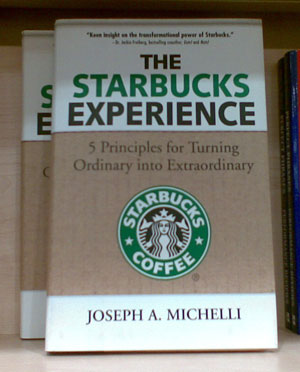Despite best efforts at the global standardisation, the experience of a product or service can vary greatly depending on the local culture. It is coloured by comparisons with local competition, and local cultural perceptions of the product’s originating culture.
This post has been sparked by spotting this book:
My initial reaction was a somewhat ho-hum one. I simply don’t associate Starbucks with amazingly good coffee. (No, I did not buy the book; this post is not about the book.)
I get the impression that Starbucks in North America is more so perceived as providing good coffee and a good experience – the whole “third place” between work and home. Starbucks in Australia, and certainly within friends of my generation, is not somewhere you automatically think of going to for a coffee.
We are already awash with great local cafés serving real coffee. Our cities are nice and not too crowded. Our lifestyle is not that hectic (yet). Perhaps we don’t need the third place as much (yet).
In Singapore/Malaysia, Starbucks is seen as something else altogether. It is a different place to seriously hang out (and for what is equivalent to someone in Australian paying AU$30 per frappucino you would want to seriously hang out). There is the status and prestige associated with a Western brand.
From North America, to Australia, to Singapore/Malaysia; Starbucks offers a consistent product experience. And yet, the experience varies. Despite best efforts and intent, message and content can only go so far as to manage and control perception. You can control the look and feel, the branding, the colour scheme, the interior design. That's about all.
Global uniformity is perhaps only an idealised illusion. It is probably only truly useful for travellers. Those who want to experience a slice of home, a mug of the known and expected; especially in a land far removed from the traveller’s daily experience.